Tagged With ‘fruity’
Hermès
Eau de Citron Noir
2 July, 2018
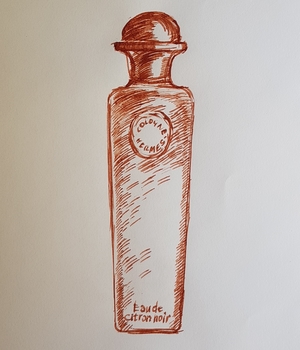 I’ve always loved eau de cologne. There’s nothing like the exhilarating zing of citrus to start your day, especially in sultry weather. The classic cologne such as 4711 Kölnisch Wasser, with its mix of citrus fruits, lavender, rosemary and neroli oil, is a well-nigh perfect (if all-too-evanescent) formulation, but over the years many perfumers have tried their hand at adding their own individual twist, with greater or lesser success.
I’ve always loved eau de cologne. There’s nothing like the exhilarating zing of citrus to start your day, especially in sultry weather. The classic cologne such as 4711 Kölnisch Wasser, with its mix of citrus fruits, lavender, rosemary and neroli oil, is a well-nigh perfect (if all-too-evanescent) formulation, but over the years many perfumers have tried their hand at adding their own individual twist, with greater or lesser success.
At Guerlain, for example, each generation of perfumers has created their own cologne, and the brand’s range of Les Eaux includes some wonderful reinterpretations such as Jacques Guerlain’s Eau de Fleurs de Cédrat from 1920, or current perfumer Thierry Wasser’s delicious Cologne de Parfumeur from 2010, which adds modern musks and a touch of cedar to the formula.
Hermès launched its first eau de cologne in 1979, with Françoise Caron’s superb Eau de Cologne d’Hermès, which was renamed Eau d’Orange Verte in 1997. For me it’s up there with Dior’s Eau Sauvage and Guerlain’s Vetiver as one of the greatest men’s perfumes around, and I’d expect that it remains their best-selling cologne. In 2009, though, Jean-Claude Ellena started expanding the range, with Eau de Gentiane Blanche and Eau de Pamplemousse Rose, followed in 2013 by Eau de Narcisse Bleue and Eau de Mandarine Ambrée.
Hermès released two more colognes in 2016, marking the handover between Jean-Claude Ellena and his successor as in-house perfumer, Christine Nagel. Ellena’s Eau de Neroli Dorée is a superb celebration of the scent of orange blossom, while Nagel’s Eau de Rhubarbe Ecarlate is fruity and great fun.
Her latest addition to the range is Eau de Citron Noir, which takes lime rather than lemon as its starting point. And not just any lime: the black lime of its name refers to the charcoal-black sun-dried limes you can buy in Oman, where they’re ground up and used as a spice. Nagel credits my fellow perfume blogger Persolaise for introducing her to this ingredient, which shows how important good blogs have become for the industry itself. Black limes give an earthy, rather sour taste to food, and lack the sweetness of fresh limes – but they also have a touch of smokiness, which Nagel has tried to recapture in her cologne.
As a fan of colognes in general and lime in particular, Citron Noir should be right up my street. And it is – at least to start with. As with most colognes, its initial, zesty burst of citrus quickly fades away, to be followed by Nagel’s recreation of the unusual fresh-but-smoky scent of black lime, which still (to me at least) has a bit of fruitiness about it. Unfortunately that’s where I get off, if I can put it that way: on my skin the fruitiness seems to turn slightly sour after a while, and that’s not what I’m looking for in a cologne. On the other hand it makes a fantastically invigorating shower gel, since its initial lime freshness has no time to disappear.
Hermès
Eau de Néroli Doré and Eau de Rhubarbe Eclarate
11 November, 2016
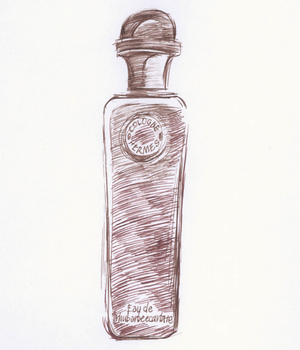 In spring 2016, after ten years as Hermès’ in-house ‘nose’, Jean-Claude Ellena handed over the (no doubt luxuriously designed) reins to the Swiss-Italian perfumer Christine Nagel. Hermès celebrated the handover with two new additions to its Colognes range, one by Ellena and the other by Nagel – her first perfume for the brand.
In spring 2016, after ten years as Hermès’ in-house ‘nose’, Jean-Claude Ellena handed over the (no doubt luxuriously designed) reins to the Swiss-Italian perfumer Christine Nagel. Hermès celebrated the handover with two new additions to its Colognes range, one by Ellena and the other by Nagel – her first perfume for the brand.
Ellena’s Eau de Néroli Doré is a fittingly sumptuous sign-off from this much-lauded perfumer, using high concentrations of neroli oil, extracted from the flowers of the Seville orange tree. It’s as refined and elegant as the man himself, and like most of his fragrances it also contains an ingredient more often associated with food. In this case it’s saffron, which (to my nose at least) seems to give the perfume an added touch of smoothness and sheen.
Christine Nagel’s Eau de Rhubarbe Eclarate, by contrast, is an exercise in sheer vivacity and ebullience, using the smell of freshly-cut rhubarb and extending its longevity with the soft, refined scent of modern synthetic musks. It’s fruity and sweet and instantly appealing, more emotional than intellectual, but certainly great fun. With its ruby-red bottle it’s a real pick-me-up at the start of the day; save the golden Eau de Neroli Doré for later.
Elie Saab
Essence No 6: Vetiver
29 November, 2015
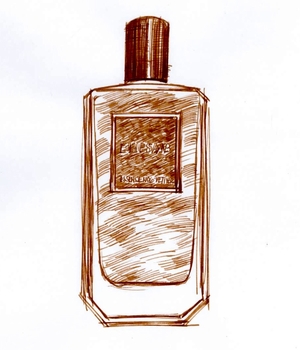 Is it just me, or would you be more impressed if a successful fashion designer decided not to do a perfume range than decided to do one? But there we are: perfume and fashion have gone together since the days of Paul Poiret, and you can’t blame Elie Saab from joining the crowd.
Is it just me, or would you be more impressed if a successful fashion designer decided not to do a perfume range than decided to do one? But there we are: perfume and fashion have gone together since the days of Paul Poiret, and you can’t blame Elie Saab from joining the crowd.
Actually perhaps that’s a bit unfair, as Saab’s new perfume, Essence No 6: Vetiver, is a really fine unisex fragrance, cleverly balancing the slightly damp earthiness of vetiver with the woody, floral scent of violet and herbal lavender.
There again maybe I shouldn’t have been surprised, as like all of Saab’s fragrances, Vetiver is the work of Francis Kurkdjian, who is now arguably the leading perfumer of his generation. French-born Kurkdjian sprang to fame at the age of 26 when he created Le Male for Jean-Paul Gaultier, and he has gone on to launch a stream of commercial hits, from Armani Mania to My Burberry. Yet he’s remained a highly creative perfumer, with his own excellently packaged Maison Francis Kurkdjian line.
In 2010 Saab signed a ten-year deal with Beauté Prestige International, one of the big perfume licensing companies (which in turn is owned by Shiseido), and the first Elie Saab perfume came out the following year. The Essences range was launched in August 2014, and Essence No6: Vetiver is the latest addition, along with Essence No7: Neroli (funnily enough there isn’t an Essence No5 in the range, presumably for Chanel-related reasons).
Vetiver has long been one of the most popular ingredients in perfumery, particularly in men’s perfumes. It’s not hard to understand why: the dried roots of this tropical grass have a wonderfully earthy, sexy, slightly bitter smell. You could probably use good-quality vetiver oil as a scent in its own right, but understandably enough, creative perfumers enjoy the challenge of combining it with other ingredients to bring out its specific qualities. In Guerlain’s classic Vétiver, for example, it’s combined with the lemony citrus smells you’d expect to find in a men’s cologne.
For Essence No6: Vetiver, perfumer Francis Kurkdjian has done something a bit different, by softening the earthy vetiver with the gentler, less abrasive scents of lavender, cloves, geranium and bergamot orange. Together they give Essence No6 a gentle touch of fruit, and even a hint of chocolate, though vetiver remains the star of the show. The result is deliciously rich and rounded, and you can really sense the quality of the ingredients. The chunky glass bottle, too, has an appealing weight to it, helped by the attractively unfussy, rather retro design, like a men’s after-shave from the 1930s. Perfect for wearing every day.
Hermès
Equipage Géranium
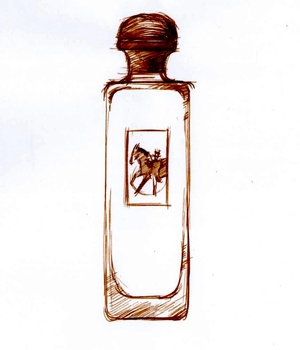 Equipage is such a classic perfume that it’s tempting to ask why anyone would mess with it, but that’s a bit like wondering why anyone would want to reinterpret the Beatles’ original version of Yesterday.
Equipage is such a classic perfume that it’s tempting to ask why anyone would mess with it, but that’s a bit like wondering why anyone would want to reinterpret the Beatles’ original version of Yesterday.
Created by the perfumer Guy Robert and launched in 1970, Equipage was the first Hermès perfume to be designed specifically for men, and Robert composed a rich, subtly spicy scent which includes – among many other things – bergamot orange, jasmine, lily of the valley and clove-scented carnations.
Forty-five years on, the company’s in-house perfumer, Jean-Claude Ellena, has revisited three of its classics, in each case pairing them with a new ingredient. First came Bel Ami Vétiver, followed by Rose Amazone, and now we have his updated version of Equipage – Equipage Géranium.
If Ellena’s attempt to give Equipage a modern twist isn’t (to my nose at least) entirely successful, his choice of geranium (or pelargonium, to be botanically correct) as a new ingredient is a typically clever and imaginative one. Though the leaves of different species of pelargonium smell of everything from lemon to cinnamon, most of the so-called geranium oil used in perfumery comes from a single South African species, Pelargonium graveolens. As with all natural ingredients, geranium oil comes in a range of different grades, but they generally share a fresh, slightly sharp smell that’s usually described as both fruity and minty, often with a hint of rose.
I’m guessing that it was the fresh, minty element of geranium oil that appealed to Jean-Claude Ellena, and Equipage Géranium does smell a tiny bit fresher and sharper than the original Equipage – but it’s a subtle twist rather than a radical reinvention. I’m not sure it’s sufficiently different to make it worth choosing over the original, but unlike many of Ellena’s perfumes, which are always refined but sometimes stripped down until they’re slightly colourless, Equipage Géranium retains all the richness and complexity of its inspiration. Given the crude simplicity of so many modern scents, that’s a quality to be celebrated.
Different Company
Osmanthus
8 July, 2014
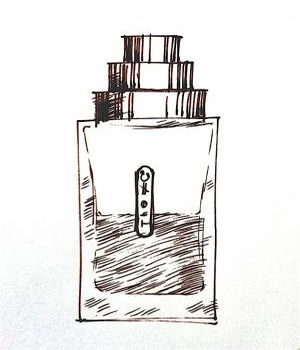 Much excitement in Weymouth, as the old Woolworth’s site has been transformed into a branch of T.K.Maxx. Even more excitement when, on our first visit, what should I pluck from the trashy mass-market scents you’d expect to find in a discount outlet but a brand-new bottle of Osmanthus by The Different Company.
Much excitement in Weymouth, as the old Woolworth’s site has been transformed into a branch of T.K.Maxx. Even more excitement when, on our first visit, what should I pluck from the trashy mass-market scents you’d expect to find in a discount outlet but a brand-new bottle of Osmanthus by The Different Company.
What a highly collectible perfume by a fairly obscure, high-end brand was doing in the Weymouth branch of T.K.Maxx I have no idea, but there it was, ours for the princely sum of £16.99 (recommended retail price €142).
Created by the much-admired perfumer Jean-Claude Ellena (now the in-house perfumer for Hermès) for the company he founded in 2000, Osmanthus gets an admiring review in the even more widely admired Perfumes: The Guide by Luca Turin and Tania Sanchez, and you can see why.
It’s a gentle, sweet but subtle scent, whose plush peachy centre is reminiscent of Guerlain’s timeless Mitsouko, though it seems to lack either Mitsouko’s strength of character or its mysterious staying-power. Yet Osmanthus has magic of its own, and its apparent evanescence on the skin proves something of a disappearing trick – for after putting a little on the back of my hand and noting that it didn’t seem to last very long, what should happen but that an hour or two later, as if from nowhere, its fresh, fruity scent would suddenly snap into focus again, almost as strong as when I first sprayed it on.
I’ve no idea how it’s done, or even whether the effect was intentional, but my guess is that it’s got something to do with the way Osmanthus’ peachiness bonds with the perfume’s other elements, some of which are a little surprising, like castoreum, a resinous compound extracted from beavers that has a leathery, animalic smell and is also found in Chanel’s wonderful Cuir de Russie.
Natural osmanthus, incidentally, is an attractive evergreen shrub which, in sheltered conditions, will grow to the size of a small tree. It grows wild in the Himalayas, China and Japan and was first introduced to European gardens in 1771, where it became known as Sweet Tea or Fragrant Olive. In the autumn it bears thousands of small but intensely fragrant white flowers, whose intoxicatingly sweet scent gives the plant its botanical name, Osmanthus fragrans.
Its fragrance, indeed, is remarkably powerful, as we discovered on an autumn visit to the enchanted garden of Brécy, near Bayeux. From the massively stepped levels of the formal gardens, which form a kind of vast single staircase up towards the Normandy sky, we recognised osmanthus’ heady scent a long time before we finally located its source, from a couple of dark columnar trees planted close against the south wall of the church, outside the gardens themselves.
Despite the sheer intensity of its fragrance, this is one of the only powerfully sweet scents I know that one can never smell enough (unlike, say, Madonna lilies, whose scent becomes overwhelming after a while): there’s a fresh lemony edge to osmanthus that makes it refreshing and intoxicating all at once. Enjoy Jean-Claude Ellena’s perfume by all means, but plant the tree wherever you can.
Chanel
Sycomore
28 May, 2014
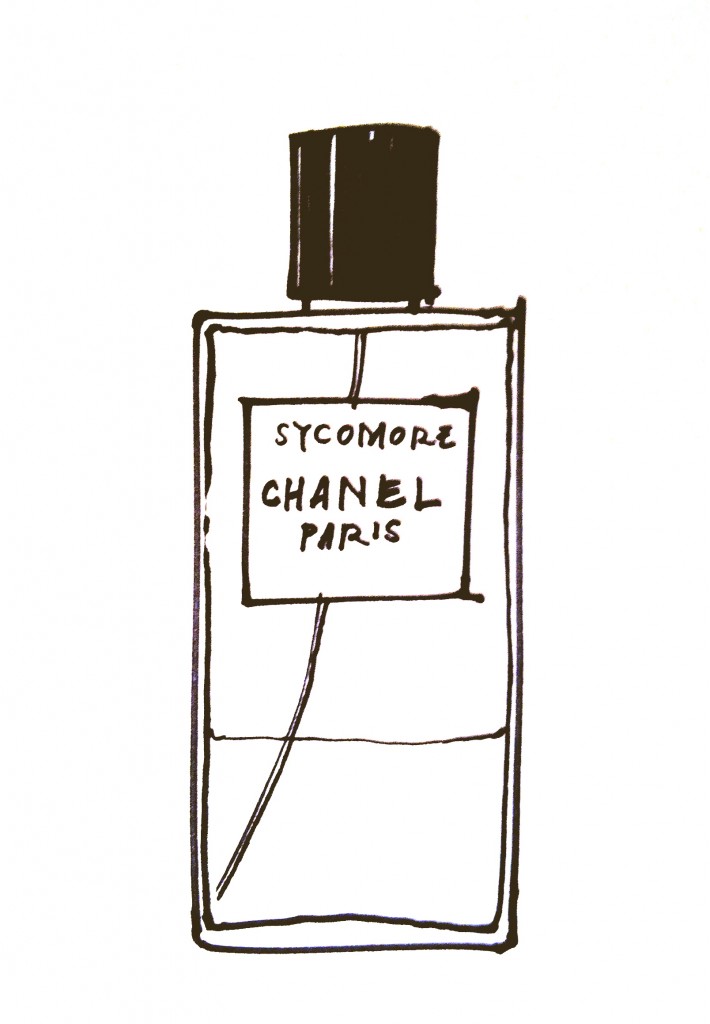 Until recently, Sycomore was one of the most extraordinary perfumes that I know (see note, below). OK, its name looks like a misspelling of sycamore, a tree that – in Britain at least – no right-minded person would name a fragrance after. Sycamores, after all, are as common as muck, breed like rabbits and are often looked down on by ecologists as they’re not even native trees.
Until recently, Sycomore was one of the most extraordinary perfumes that I know (see note, below). OK, its name looks like a misspelling of sycamore, a tree that – in Britain at least – no right-minded person would name a fragrance after. Sycamores, after all, are as common as muck, breed like rabbits and are often looked down on by ecologists as they’re not even native trees.
Acer pseudoplatanus, to give the tree its proper botanical name, is also responsible for many of those deeply irritating ‘leaves on the line’ excuses that railway companies give out each autumn to explain why their trains are running late. Worst of all, from a perfume perspective, they don’t even really smell of much, though their leaves do have the faintest leathery scent and their wood, once dried enough, burns with a pretty generic woodsmoke smell.
So is Sycomore just an example of misguided marketing, like Ralph Lauren’s dreadfully named Glamourous? Actually, no. Coming from arguably the world’s most tightly policed brand, its name will have been very carefully considered – and actually it almost certainly refers not, as I’d initially thought, to Acer pseudoplatanus at all but to a rather more exotic tree, the so-called Sycomore fig.
Ficus sycomorus (to use its Latin name) is a large, spreading tree that grows across central Africa and the Middle East, where its heavy shade is much appreciated; it was known to the Egyptians as the Tree of Life. It’s a tree I haven’t sniffed, but my guess is that it shares at least some of the dry, green, slightly fruity scent that we know from other varieties of fig – though ironically there’s only the faintest hint of figginess in Sycomore.
Anyhow, enough about the name. What makes Sycomore extraordinary, for me, is a trick it seems to be able to do that no other perfume I’ve come across seems to be able to do. This is to smell like two completely different scents, depending on whether you smell it close up or at a distance. Up close it has the strong, earthy, pleasantly bitter scent of vetiver, the root of an Indian grass that’s related to lemongrass and citronella. It’s also grown commercially in the Caribbean, and apparently Chanel’s super-high-quality vetiver originated in Haiti.
Vetiver is usually classed as one of the great masculine fragrances, presumably because of its bracing bitterness and lack of cloying sweetness; it’s certainly not a flowery smell. But it also has a warmth and – get this – a touch of smokiness that gives it extra depth and complexity, especially when it’s surrounded by such a delicious cushion of other scents, which mix smokiness with a slightly sweeter touch of fruit. Vetiver is also famous for its staying power, and a spritz of Sycomore can last you all day.
It’s the added fruitiness that, on occasion, one gets a whiff of when someone wearing Sycomore strolls by, and then it’s like a different, warmer, sweeter fragrance altogether, with hardly a hint of the vetiver that dominates the perfume on the skin. If it’s an intentional trick I’m in awe, though it seems perfectly possible, given that Sycomore was created by Chanel’s chief nose Jacques Polge in collaboration with Christopher Sheldrake, the legendary British perfumer who has been Chanel’s director of research and development since 2005.
Like the other fragrances that belong to Les Exclusifs de Chanel, Sycomore costs about twice as much as your average perfume, but it does come in a typically (for Chanel) handsome bottle, beautifully presented in a chunky white-and-black box. The hidden magnet in the heavy black cap, ensuring that the iconic twin Cs of the Chanel logo always end up perfectly aligned, is a particularly nice touch, even if it has since been adopted by one or two other brands.
Though it’s a classically masculine scent Sycomore is (quite rightly) marketed as a unisex fragrance, and like most men’s perfumes it can smell wonderful on a woman. Yet what I love most is that, from the very first sniff, it has a wonderful feeling of luxury, quality and depth, which are things that are all too often lacking in other perfumes. And who could resist its baffling cleverness, like a cryptic crossword in scent?
Autumn 2016 update. Oh dear: evidently Sycomore hasn’t been a commercial success, as Chanel have recently ‘updated’ it, and now – minus the fruitiness that made it so unusual – it’s a perfectly pleasant, fairly straight-up vetiver. From being unique it’s become one of many. Such a shame – another great perfume gone.
Yves Saint Laurent
M7
12 July, 2012
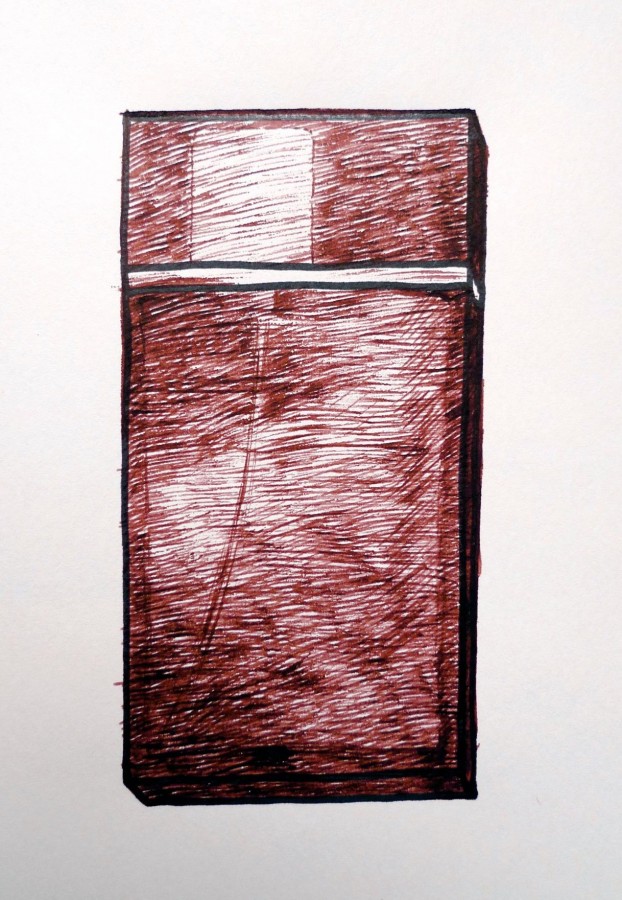 Tom Ford’s relatively short tenure at Yves Saint Laurent, from 2000 to 2004, won him both fans and detractors – among them YSL himself, who used to pen helpful letters criticising Ford’s latest shows. But it was Ford’s own considerable design talents and his genius for publicity dragged the declining fashion house back into the limelight, no more so than with the launch of M7 in 2002.
Tom Ford’s relatively short tenure at Yves Saint Laurent, from 2000 to 2004, won him both fans and detractors – among them YSL himself, who used to pen helpful letters criticising Ford’s latest shows. But it was Ford’s own considerable design talents and his genius for publicity dragged the declining fashion house back into the limelight, no more so than with the launch of M7 in 2002.
In a nod to Jeanloup Sieff’s legendary 1971 photograph of a naked Yves Saint Laurent that was used to promote the first YSL men’s fragrance, Ford launched M7 in 2002 with a full-frontal nude of martial-arts star Samuel de Cubber shot by Swedish photographer Sølve Sundsbø.
The all-too predictable storm of controversy may have long since been left behind, and sadly the perfume has since been reformulated and dumbed down, which is a real shame as it was originally an unusual and (to me at least) extremely appealing scent.
Tom Ford’s influence is most obviously apparent with the original bottle (pictured), which was a crisply designed rectangle of brown glass, the colour of medicine bottles. The brown perspex cap clipped on with a satisfying clunk, and the spray mechanism was set two-thirds along the top, giving it a cool asymmetric outline which has ‘designer’ written all over it. (Not literally – keep up!) It’s since been redesigned and the perfume reformulated, which is sadly typical of the industry.
What makes the perfume itself immediately striking is its odd yet somehow very successful combination of fruity sweetness with the almost catch-in-the-throat smell of woodsmoke, which gives it a masculine edge it would otherwise lack. Not very noticeable is an initial burst of citrus provided by bergamot and mandarin, though that probably adds something to that first impression of fruitiness.
What I hadn’t realised was that perfumers Alberto Morillas and Jacques Cavallier also added a touch of rosemary to the mix. It’s not something that jumps out at you, but smelling it again I twigged, for the first time, that rosemary’s herby smell has something a bit smoky about it too.
It’s a very clever way to emphasise this fragrance’s appealing smokiness, whose dryness is also underlined by a touch of that ultimate in male-perfume ingredients, the bitter earthy smell of vetiver. M7 lasts well too, and if some people find it either too fruity or slightly medicinal, then let them; I really don’t care.